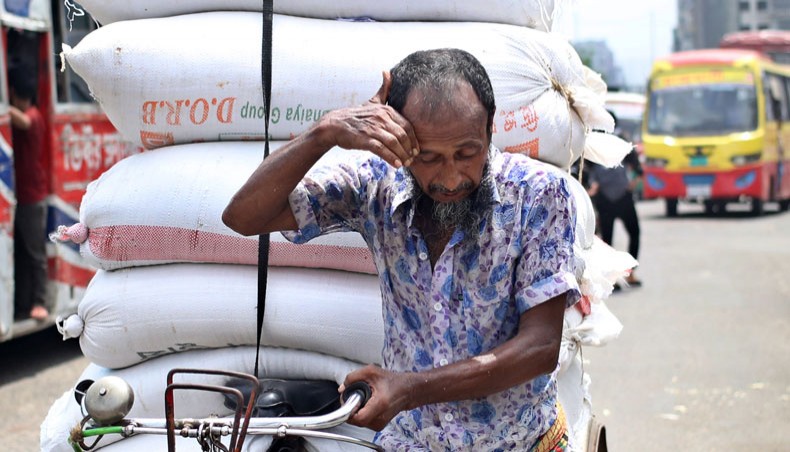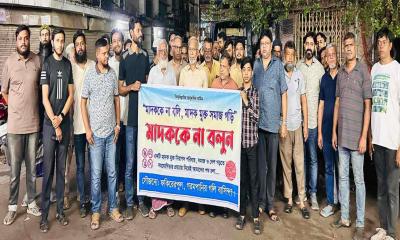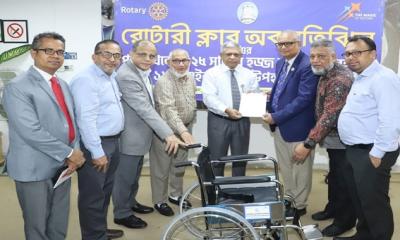-Ramna Park, Suhrawardy Udyan, BUET, and DU less heated
-Kamrangirchar, Mohammadpur, Adabar, Mohakhali are in heat danger.
-90 Pc Dhaka’s areas are in danger of severe heat waves
-Headache, vomiting, cold-cough problems increases
Residents in the capital's Shahbagh, Ramna Park, Suhrawardy Udyan, Bangladesh University of Engineering and Technology (BUET), and Dhaka University (DU) areas, where there are more trees, are in relatively less danger this summer. The temperature level is lowest in these areas.
But Kamrangirchar and Adabar areas are the hottest in the capital. Apart from this, the temperature has become intense in the Dhanmondi area. In all, 90 percent of North and South Dhaka City Corporation areas are in danger of severe heat waves. This information came out in a report of the Bangladesh Red Crescent Society. The organization has prepared this survey report and action plan to identify the dangers of poor people in this situation of heavy fire.
Kazi Shafiqul Azam, Secretary General of Bangladesh Red Crescent Society said in an interview given to the media that summer will be hot due to natural reasons, but it is normal. But for several years, intense heat across the country, including the capital, is hampering the normal life of people. Citizens' health risks are increasing, efficiency is decreasing. We surveyed to identify the type of heat exposure common citizens especially poor people are exposed to.
Urbanists and environmentalists said that 90 percent of the capital's area is turning into a heat or heat island for almost the entire summer. Dhaka's planned residential areas of Uttara, Mirpur, and Dhanmondi have also faced a similar threat of heat. The risk of overheating is increasing year by year due to the large number of people living in a small space, excessive use of air conditioners, lack of trees and wetlands, and the fact that most of the capital city is covered with concrete structures.
According to the study, the temperature of Kamrangirchar and Adabar is so high that there are various health risks even if you stay outside for a short time. The income of rickshaw pullers, van drivers, hawkers, construction workers, and low-income people in these areas is decreasing. They can work less than normal hours. Diseases are increasing due to burning and the medical expenses of poor people are increasing.
Among the capital's commercial areas, temperatures have reached extreme levels in Motijheel, Farmgate, Mohakhali, Karwan Bazar, and Gulshan areas. However, due to the use of air conditioners in commercial buildings in these areas, people staying inside are less at risk. But outside the buildings or on roads and open spaces, the heat is increasing due to the air conditioners of these buildings. After last year's extremely hot weather, the Red Crescent Society, Bangladesh Meteorological Department, and Climate Center jointly conducted this study on the dangers of heat in Dhaka city.
According to the survey, the heat-threatened areas are Kamrangirchar, Mirpur, Gabtali, Goran, Basabo, Tongi, Shahidnagar, Babubazar, Jurain, Hazaribagh, Postgola, Jatrabari, Tejkunipara, Nakhalpara, Sayedabad, Kurmitola, Azampur, Kamarpara, Mohammadpur, Adabar and Mohakhali. These areas are at risk of heat waves throughout the summer. However, the danger of heat is less in Shahbagh, Ramna Park, Suhrawardy Udyan, and surrounding areas. Other low-risk areas include Uttarkhan, Khilkhet, and Demra. Many places in these areas are not yet populated. Besides these areas still have some vegetation and wetlands.
According to the study, the sale of saline at that time increased three times from the normal period. Headache, vomiting and cold-cough problems increase in summer among students. Diarrhea and cholera outbreaks also increased. About 87 percent of respondents in the survey, conducted between March and June 2023, reported feeling hotter than the previous year. A rickshaw puller drives the rickshaw two to three hours less during this period than normal time. As a result, his income also decreased.
Md Shahjahan, one of the heads of the survey team and assistant director of Bangladesh Red Crescent Society, said that the heatwave like other disasters in Bangladesh has started causing major damage. People are also dying. As a result, declaring this danger as a disaster, all government and non-governmental organizations should stand by the people in summer.
Dhaka North City Corporation (DNCC) Mayor Atiqul Islam said we are trying to bring some relief by sprinkling water in hot areas. At the same time, I started giving umbrellas and water bottles to poor people. And as a long term step we have started planting trees.
ZH






